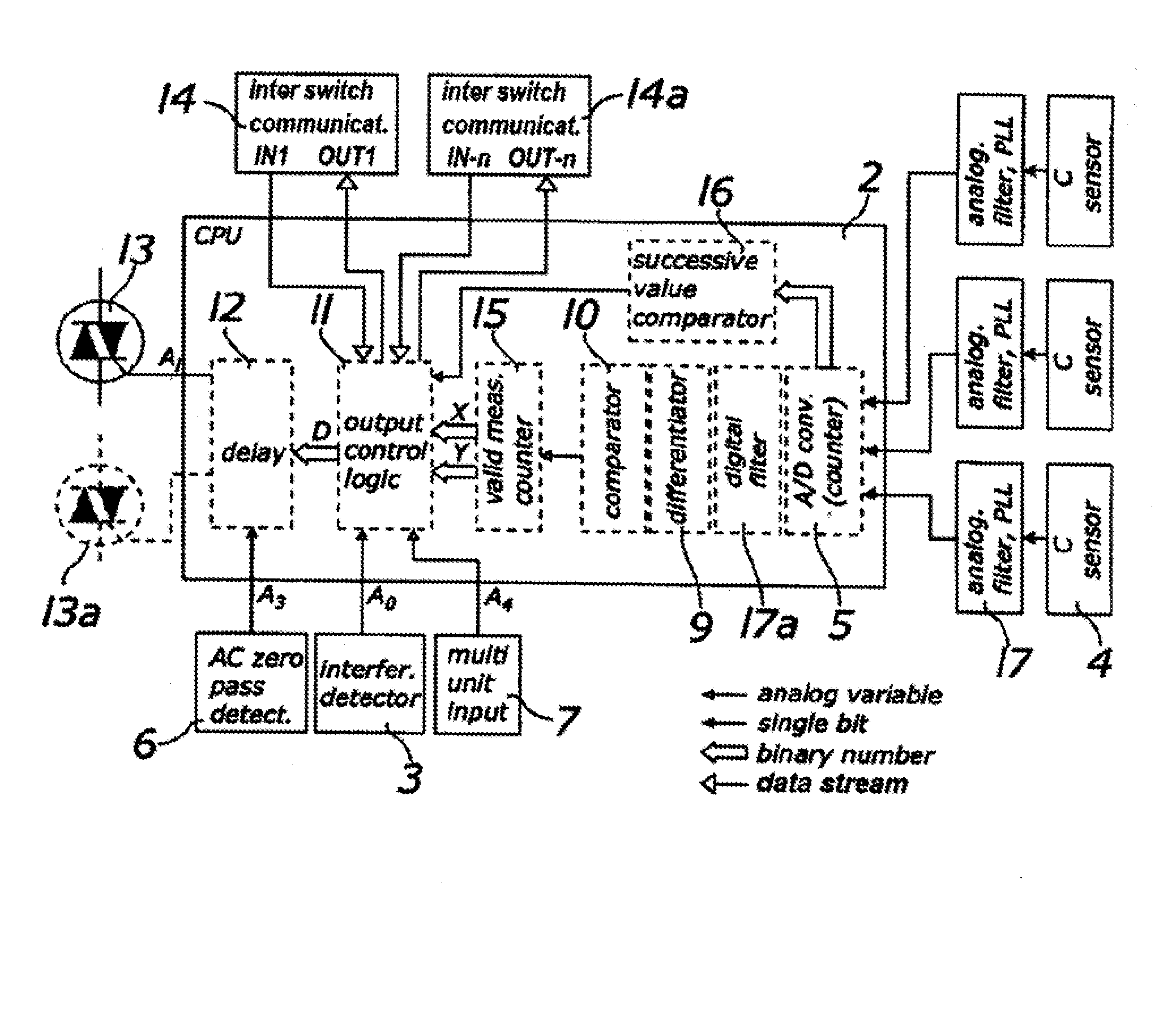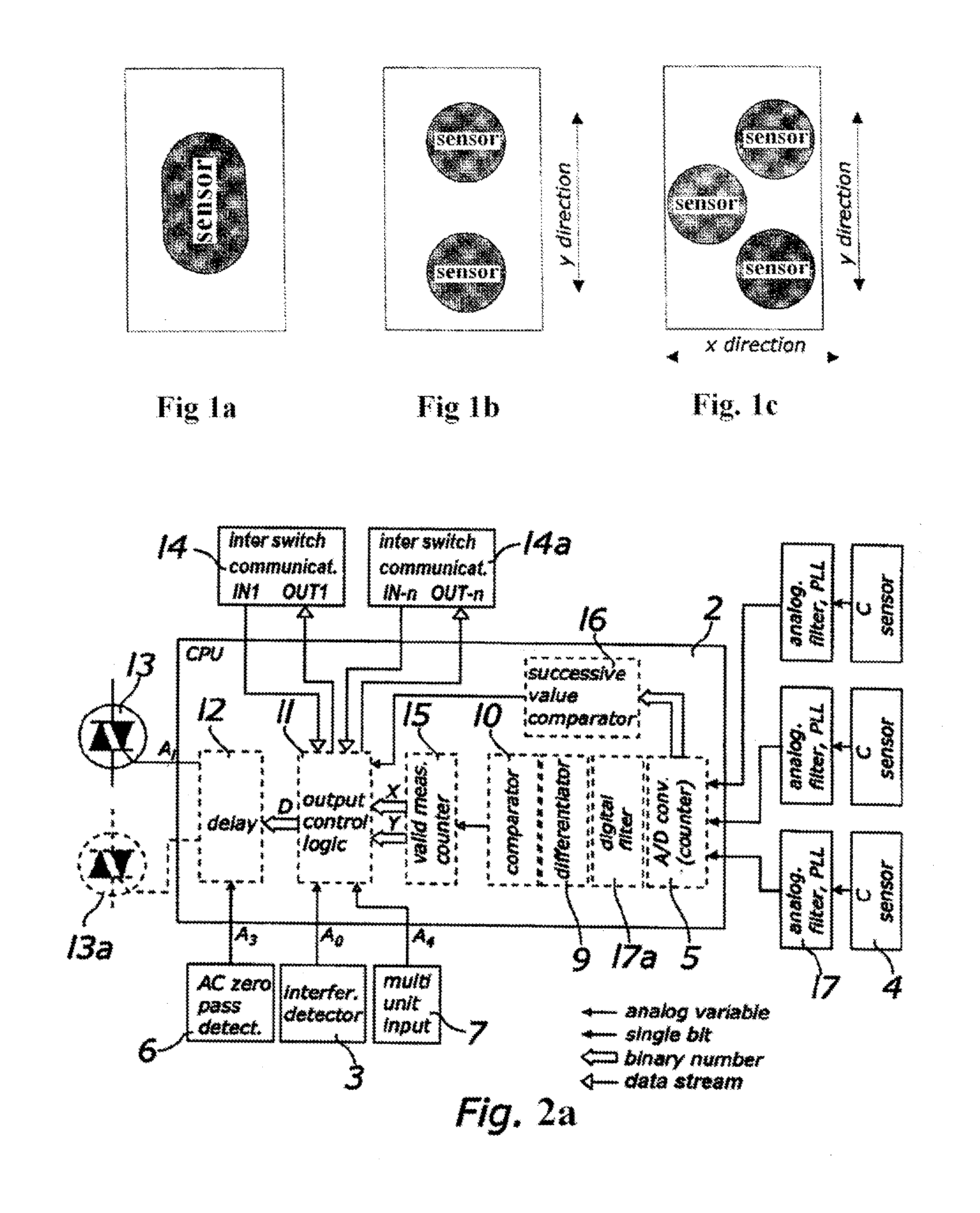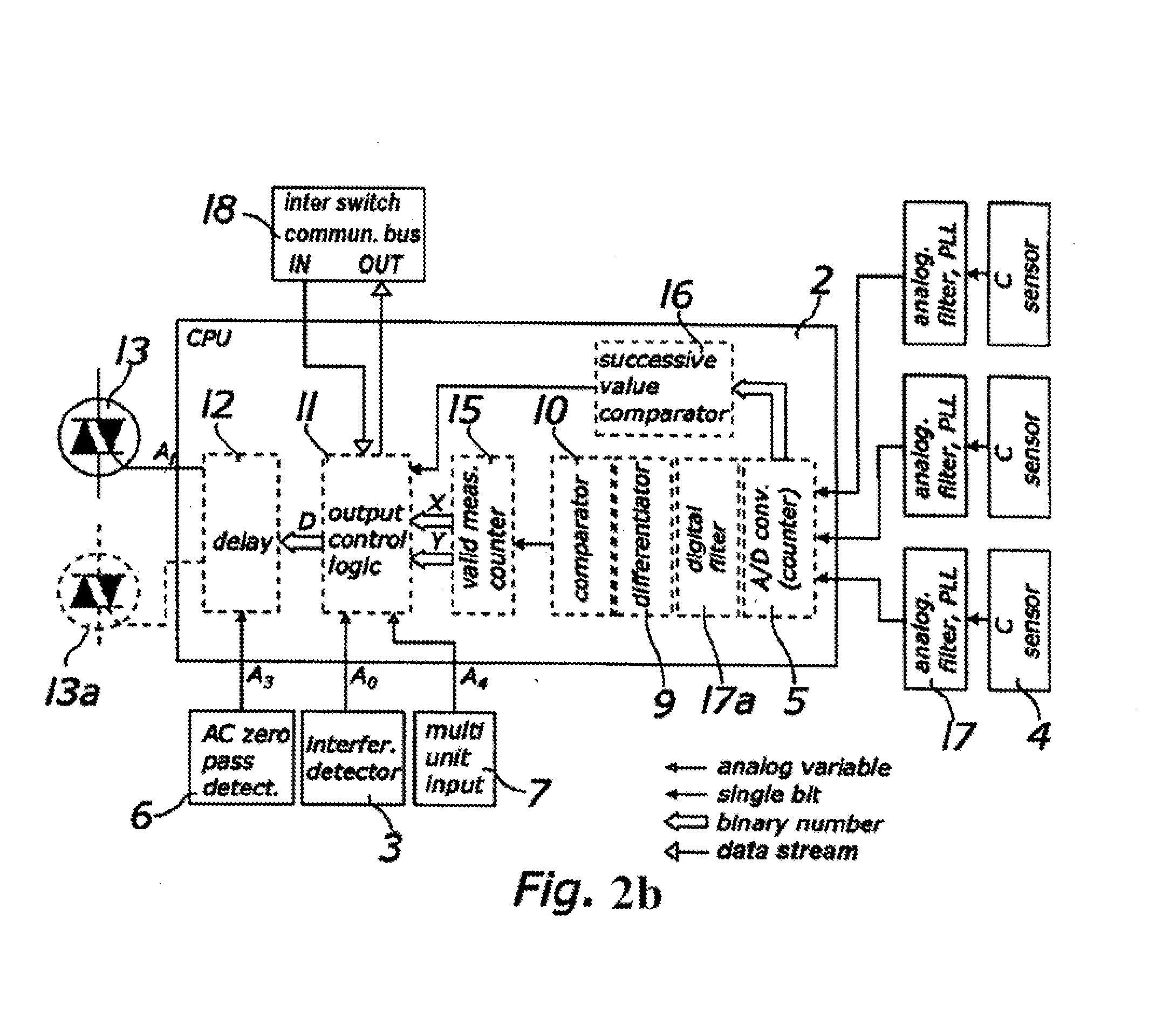Compact Non-Contact Multi-Function Electrical Switch
- Summary
- Abstract
- Description
- Claims
- Application Information
AI Technical Summary
Benefits of technology
Problems solved by technology
Method used
Image
Examples
Embodiment Construction
[0055] To construct the inventive switch for use in a standard wall box and to meet all international standards, the switch must be as compact as possible. The number and size of components must be minimized, as well as the number of data lines between elements of the circuit and the space occupied by inter-component connections to reduce the number of chip-pin count, reducing chip size.
[0056] Some of the elements used in the switch (triac, snubber capacitor for triac, filter choke, power supply, fuse) are basic and are conventionally used in many types of electronic devices. Since they are quite bulky, they also would normally decrease useful space for specialized electronic parts such as the capacitive sensor, control circuitry, back lighting, etc.
[0057] Previously, it was thought that to achieve a compact integral design, it was necessary to detect only the presence of an object such as a hand placed in front of the sensor rather than its position relative to the sensor. This p...
PUM
 Login to View More
Login to View More Abstract
Description
Claims
Application Information
 Login to View More
Login to View More - R&D
- Intellectual Property
- Life Sciences
- Materials
- Tech Scout
- Unparalleled Data Quality
- Higher Quality Content
- 60% Fewer Hallucinations
Browse by: Latest US Patents, China's latest patents, Technical Efficacy Thesaurus, Application Domain, Technology Topic, Popular Technical Reports.
© 2025 PatSnap. All rights reserved.Legal|Privacy policy|Modern Slavery Act Transparency Statement|Sitemap|About US| Contact US: help@patsnap.com



